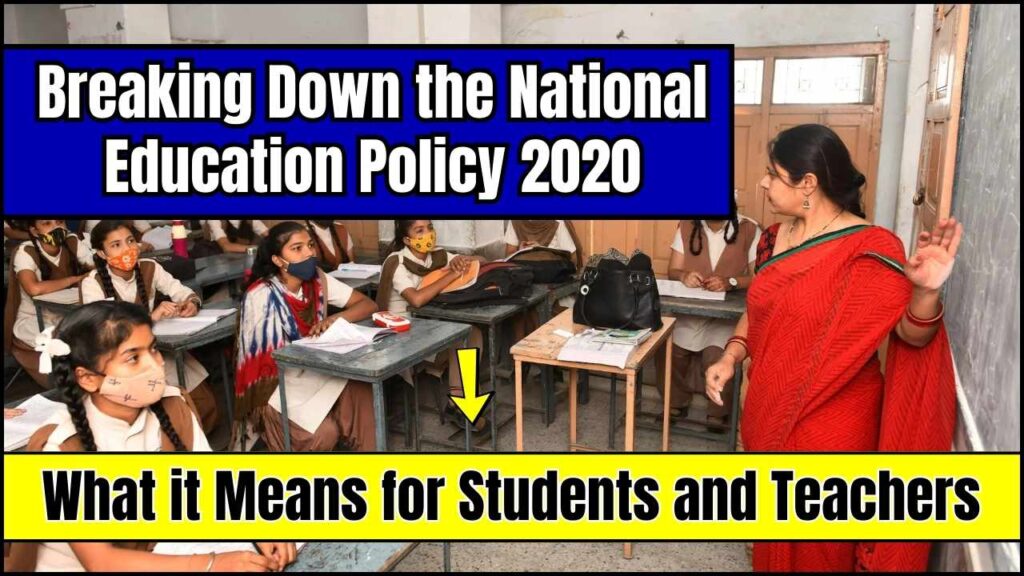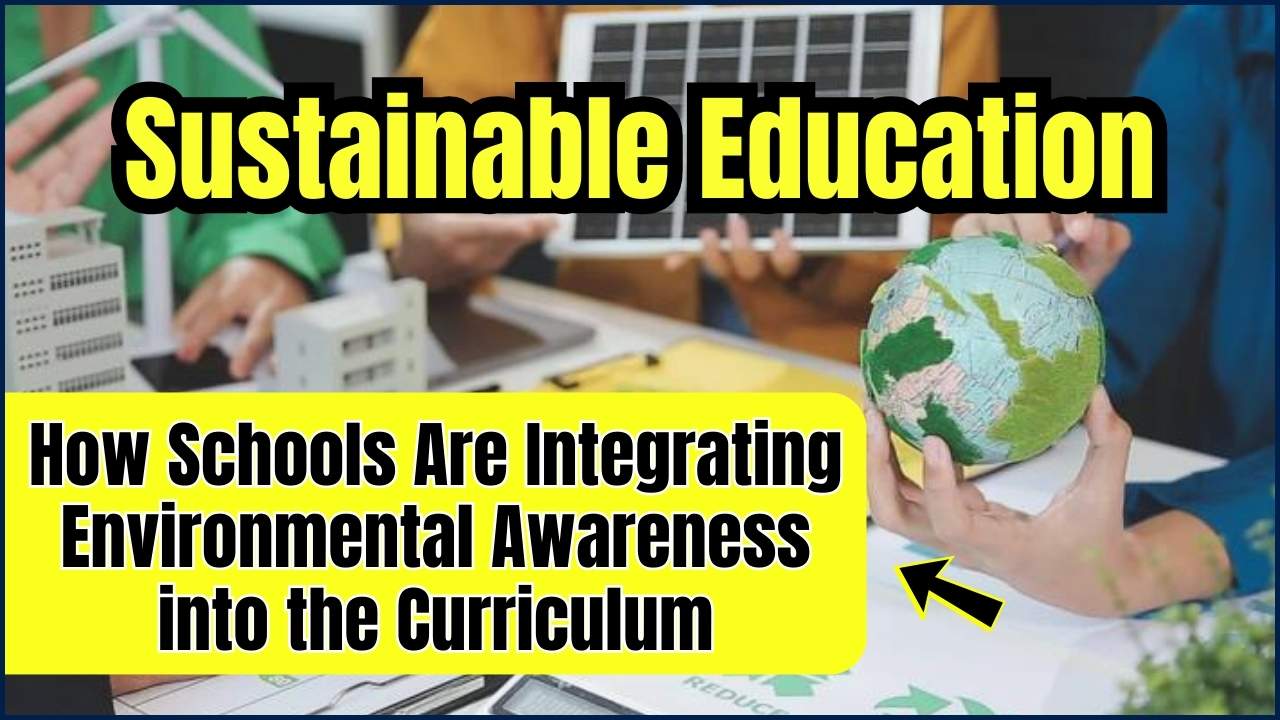National Education Policy 2020: The National Education Policy 2020 (NEP 2020) is not just a tweak to school syllabi—it’s a full-on reboot of India’s education framework, from early learning to college degrees. Designed after more than three decades, NEP 2020 aims to make Indian education more flexible, inclusive, and aligned with global standards. Whether you’re a parent, student, or teacher, these changes are gonna impact your life.
So let’s unpack this policy, one step at a time, using real-world examples and plain English—just the way Uncle Sam would break it down at a family barbecue.

National Education Policy 2020
| Feature | Impact on Students | Impact on Teachers |
|---|---|---|
| New 5+3+3+4 system | Early focus on foundational skills | New curriculum structure to adopt |
| Mother tongue till Grade 5 | Boost in comprehension and retention | Need to teach in regional languages |
| Multidisciplinary learning | Pick subjects across streams | More cross-subject teaching |
| Continuous assessment | Critical thinking over cramming | New ways to evaluate learning |
| Tech in classrooms | Better access to learning tools | Upskilling in digital tools |
| 4-year B.Ed mandatory | Better teacher quality | Training becomes essential |
| Vocational training | Hands-on learning from Grade 6 | Partnerships with professionals |
| Higher Ed reforms | Flexible degrees, exit options | Curriculum redesign required |
| Official Site | education.gov.in | For full NEP 2020 PDF |
The National Education Policy 2020 is bold, ambitious, and well-intentioned. It promises a system that embraces diversity, rewards creativity, and values teachers. But it needs strong funding, committed leadership, and on-ground training to succeed.
If implemented right, NEP 2020 could be the bridge that connects Indian education to the future—and makes it relevant for the 21st century.
The New School Model: 5+3+3+4
Say goodbye to the boring old 10+2 format. The 5+3+3+4 structure introduces a child-first design:
- 5 years foundational: Preschool + Grades 1–2
- 3 years preparatory: Grades 3–5
- 3 years middle: Grades 6–8
- 4 years secondary: Grades 9–12
This isn’t just a facelift—it’s a ground-up revamp. The new structure builds foundational skills from age 3 and gradually layers in complexity, kinda like leveling up in a video game.
Let’s Talk Language – Mother Tongue Until Grade 5
NEP recommends schools teach in a child’s mother tongue or regional language up to Grade 5. It’s not mandatory, but strongly suggested.
Why this matters:
Studies worldwide—including in the U.S. and Finland—show that kids learn faster when taught in a familiar language.
Challenge? Many schools don’t have the resources or trained staff to teach in every regional dialect. It’s a bold move, but one that needs backup.
You Can Now Be a Science Geek and a Poet
Yes, NEP 2020 throws out rigid academic streams. Students can pick a DIY combo of subjects.
Examples:
- History + Chemistry + Animation
- Physics + Dance + Entrepreneurship
It’s like making your own pizza—grab what you love, mix the rest, and taste the results.
Smarter, Not Harder: Assessment Reforms
Board exams? They’re not going away. But they are changing. Key changes include:
- Focus on core concepts, not mugging up
- Option to appear twice a year
- Introduction of competency-based questions
Instead of “write a long essay,” you’ll face “show you understand this.”
Digital Push: Not Just for Online Classes
COVID taught us that tech is here to stay. NEP 2020 doubles down:
- National Digital Education Architecture (NDEAR): A framework to integrate digital learning across states.
- E-content in multiple languages
- Virtual labs, AI modules, gamified learning
Fun fact: In 2023, over 3.5 crore students accessed online courses via DIKSHA and SWAYAM portals.
What’s New in Higher Education
Multidisciplinary College Degrees
You can now:
- Exit after 1 year with a certificate
- Exit after 2 years with a diploma
- Complete 3 years for a degree
- Stay for 4 years for research-based honors
Academic Bank of Credit (ABC)
Like a digital locker that holds your academic credits—you can transfer between colleges.
Common University Entrance Test (CUET)
All central universities now use CUET. Think of it as the SAT of India.
Vocational Education Is In
Students from Grade 6 will get exposure to vocational training:
- Coding
- Carpentry
- Gardening
- AI & robotics
- Electric work
Hands-on is the new cool, and internships will be part of school life. In fact, the goal is to have 50% of learners exposed to skill training by 2025.
Real-Life Example: Delhi’s DPS R.K. Puram
Delhi’s prestigious DPS R.K. Puram launched interdisciplinary courses in 2023 where students chose Psychology, Physics, and Performing Arts together. Teachers used project-based learning to blend themes, like exploring brain functions through dance. That’s NEP in action!
What This Means for Teachers
Mandatory 4-Year B.Ed by 2030
No more backdoor entries. This degree will train teachers in pedagogy, digital tools, and child psychology.
50 Hours of CPD
Teachers must complete 50 hours/year of Continuous Professional Development.
Autonomy and Leadership
Teachers will:
- Design lesson plans
- Choose teaching styles
- Be promoted based on merit, not just years served
Parental Role Gets a Power-Up
Parents will now:
- Be invited to participate in school governance
- Receive training workshops on child development
- Help in project-based home learning
NEP recognizes that education doesn’t stop at the classroom door.
Money Talk: 6% of GDP for Education
India’s current education budget hovers around 3% of GDP. NEP sets a goal to push this to 6%.
Why that matters:
That extra money means better infrastructure, teacher training, digital tools, and student welfare schemes.
Regulatory Overhaul – Bye UGC, Hello HECI
NEP merges multiple regulatory bodies like:
- UGC
- AICTE
- NAAC
And replaces them with the Higher Education Commission of India (HECI), with four verticals handling regulation, accreditation, funding, and standards.
This means less red tape, more quality control.
Frequently Asked Questions About National Education Policy 2020
Q1: Is NEP 2020 fully implemented yet?
Implementation is ongoing in phases and expected to be fully rolled out by 2030.
Q2: Will school books and syllabi change?
Yes, NCERT is revising content to align with NEP. New textbooks are already being piloted in some states.
Q3: Can a college student switch degrees under NEP?
Yes, via credit transfer using the Academic Bank of Credit.
Q4: Is CUET applicable to all colleges?
Currently for central universities, but more state/private ones may join in the future.
Q5: What help is there for rural students?
NEP prioritizes local language education, scholarships, and tech-enabled learning for underserved regions.











